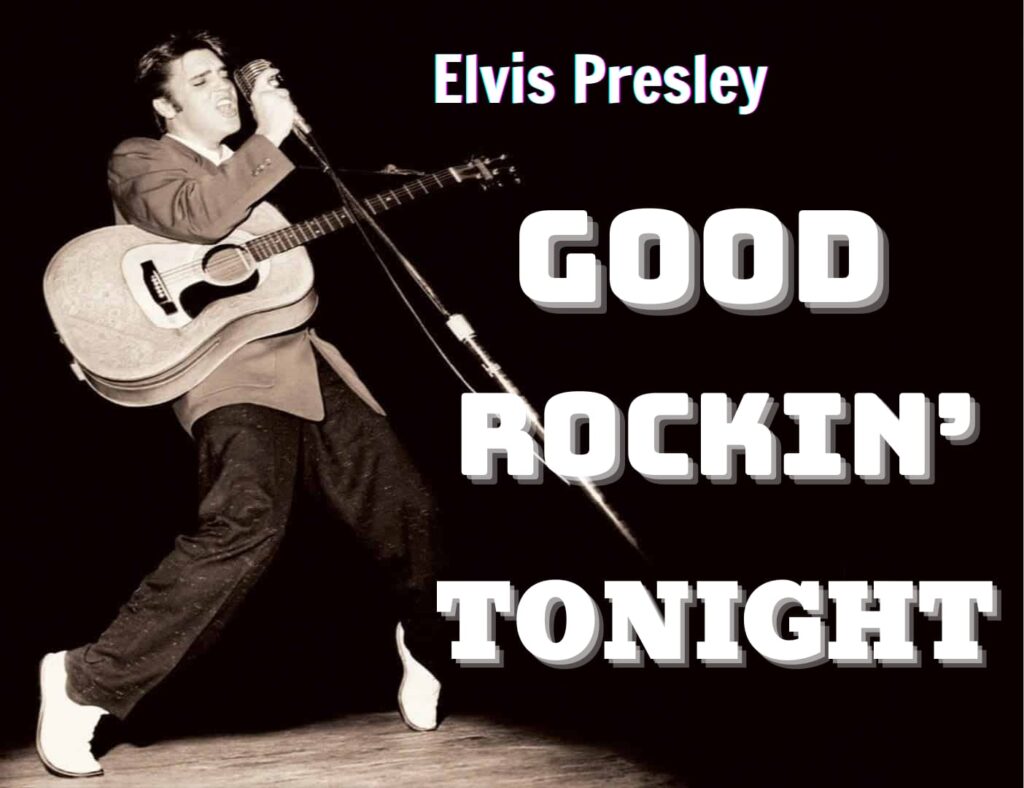
“Good Rockin’ Tonight”: A Rebel Yell Echoing Through Time
As the needle drops, a familiar rumble, a youthful swagger, and a hint of something revolutionary fill the air. For many of us, particularly those who remember a time when rock and roll was less a genre and more a seismic event, the opening chords of “Good Rockin’ Tonight” by Elvis Presley transport us back to a pivotal moment in music history. It wasn’t just a song; it was a harbinger, a declaration, and for some, a delightful affront to the staid musical landscape of the mid-1950s.
When Elvis Presley first laid down his version of “Good Rockin’ Tonight” in 1954 at Sun Records in Memphis, it wasn’t an instant chart-topper on the national pop charts. In fact, it didn’t register on Billboard’s national charts at all. However, to truly understand its impact, we need to look beyond the broad strokes of national data and delve into the regional pulse of the time. This seminal recording, released as the B-side to “I Don’t Care if the Sun Don’t Shine” on Sun Records (Sun 210), was a powerhouse on local and regional charts, particularly in the South. It became a staple on jukeboxes and radio stations throughout the Memphis area and beyond, a testament to its undeniable appeal and the burgeoning phenomenon that was Elvis Presley. While it may not have scaled the dizzying heights of the pop charts like later hits such as “Heartbreak Hotel” or “Hound Dog”, its influence was profound, laying crucial groundwork for the rock and roll explosion that was to follow. It was a grassroots hit, bubbling up from the very soil of American music, a true testament to the raw, untamed appeal of the young performer.
The story behind “Good Rockin’ Tonight” is as compelling as its sound. Originally written and recorded by rhythm and blues artist Roy Brown in 1947, it was a jump blues anthem that had already enjoyed considerable success within the R&B community, even hitting #1 on Billboard’s R&B Best Seller chart with a version by Wynonie Harris in 1948. Brown’s original was a vibrant, celebratory call to dance and let loose, brimming with an infectious energy that was characteristic of the post-war rhythm and blues scene. However, when Elvis got his hands on it, he didn’t just cover it; he transformed it. Guided by the visionary Sam Phillips at Sun Records, Elvis infused the song with his unique blend of country, blues, and an unbridled, almost rebellious, vocal delivery. This wasn’t a note-for-note rendition; it was an alchemy. Phillips, always searching for that elusive sound that would combine the raw energy of blues with the widespread appeal of country, found his answer in Elvis. The recording session for “Good Rockin’ Tonight” was part of those early, experimental days at Sun, where Elvis, alongside Scotty Moore on guitar and Bill Black on bass, was forging a new sound – rockabilly. They were young, hungry, and unburdened by commercial expectations, allowing for a freedom of expression that crackled in every groove of that vinyl. Dewey Phillips, the influential DJ at WHBQ in Memphis, famously played Elvis‘s first single, “That’s All Right,” and then quickly followed up with “Good Rockin’ Tonight,” further cementing its regional impact and hinting at the seismic shifts to come.
The meaning of “Good Rockin’ Tonight” is, at its heart, an invitation to pure, unadulterated joy and liberation. It’s about shaking off the day’s worries and surrendering to the rhythm, a universal sentiment that transcends generations. For the youth of the 1950s, however, it carried an added layer of significance. It was a musical rebellion against the perceived stiffness and formality of their parents’ generation. The very act of “rockin'” was a physical manifestation of a desire for freedom, for self-expression, and for a breaking down of social barriers. Elvis‘s performance amplified this message tenfold. His gyrating hips, his sneering lip, and his powerful, emotive voice were not just entertaining; they were a challenge, an embodiment of a burgeoning youth culture that refused to be confined. He took a song that was already energetic and infused it with an audacious sexuality and a raw, untamed spirit that had rarely been seen on such a public stage. The lyrics, while seemingly simple, contained a potent call to abandon inhibitions and embrace the present moment, a sentiment that resonated deeply with a generation seeking its own voice.
Beyond its immediate impact, “Good Rockin’ Tonight” serves as a vital historical artifact. It’s a snapshot of Elvis Presley in his rawest, most unpolished form, before the Hollywood sheen and the Vegas spectacle. It’s the sound of a young man, still finding his voice, yet already possessing an undeniable magnetism that would soon captivate the world. For those of us who lived through those transformative years, it evokes memories of sock hops and soda fountains, of transistor radios and whispered secrets. It reminds us of a time when music was genuinely transformative, capable of shocking parents and electrifying teenagers. It’s a reminder that true innovation often comes from the fringes, from those willing to blend disparate elements and challenge the status quo. “Good Rockin’ Tonight” may not have been the biggest commercial hit of Elvis‘s career, but its historical significance, its raw energy, and its role in shaping the very sound of rock and roll make it an indispensable piece of music history, forever etched in the collective memory of those who remember when rockin’ truly was good. It was more than just a song; it was a feeling, a moment, and a promise of what was to come.